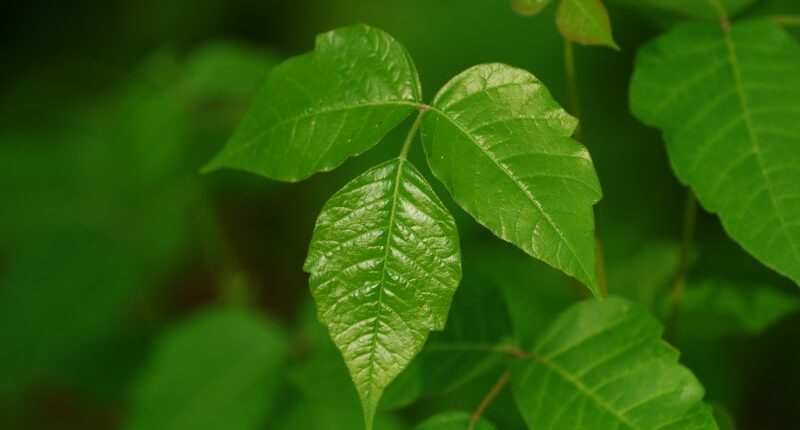Share this @internewscast.com
(NEXSTAR) – You might have avoided the infamous rashes linked to poison ivy, poison oak, or poison sumac, but that doesn’t guarantee you aren’t allergic.
Although some of the population doesn’t seem to react negatively to these plants (some estimates suggest 15%, while others indicate a much higher percentage), you can still grow sensitive to these allergenic plant species as you get older.
“You’ll also find a few people who seem immune. They never develop a rash,” states the American Academy of Dermatology regarding possible reactions. “That doesn’t mean that they will never get a rash from one of these plants. Our bodies change, so it’s always wise to avoid touching these plants.”

Poison ivy, poison oak and poison sumac are allergenic plants belonging to the Anacardiaceae or sumac family. All of these plants (and several others in the same family) contain urushiol, a substance that can cause a form of contact dermatitis in humans.
The specific name for the allergic reaction to urushiol is “rhus dermatitis,” board-certified dermatologist Lauren Ploch, MD, MEd, FAAD, tells Nexstar.
“The urushiol binds a protein on our skin cells that sets off an immunological reaction,” says Ploch, also a fellow of the American Academy of Dermatology.
Unlike other allergic reactions that people may become less sensitive to over time — such as a seasonal allergy or food allergy — people generally “grow into” contact allergies as they age, or due to repeated exposure, Ploch says.
It’s also quite rare that someone allergic to urushiol will ever grow out of it.
“It is very difficult and usually not possible to desensitize ourselves to contact allergens,” Ploch says. “We can also become more prone to contact allergens with time because of age-related barrier changes to the skin.”
Some folks have learned this lesson the hard way, it seems. Anecdotes about urushiol reactions from people claiming they were previously “immune” can easily be found in online forums.
“Never got it growing up, so never bothered to learn what it looked like,” one Reddit user wrote in a 2021 post, revealing that he had recently removed a dead tree from his yard that was covered in poison ivy.
“I spent a whole day cutting it up, vaporizing it into my face with the chainsaw,” he wrote. “Looked like Mr. Magoo after, almost had to go to the ER.”
“We are only immune until we get it,” said another user, a 39-year-old who experienced their first reaction only this month.
Urushiol isn’t only found in poison ivy, oak or sumac, either. Those with sensitivities to urushiol might be interested to know that the Anacardiaceae family also includes mango trees, cashew trees and Peruvian pepper trees, among others.
“The cashew fruit contains urushiol, but the nuts can be safe,” Ploch says. “Many parts of the mango tree contain urushiol so I recommend avoiding them if highly allergic to poison ivy.”
The Pistacia plant, which produces pistachio, is also considered a member of the Anacardiaceae family, though the urushiol is contained within the shell of the pistachio. Still, pistachios are generally safe for people with urushiol allergies to consume, provided they’re not handling the shells.
Most people with extreme sensitivities to urushiol probably already know whether or not they can handle mangoes or cashews. But the same can’t always be said about people coming into contact with poison ivy.
“Because we can ‘grow into’ contact allergies … I always recommend that people cover their arms and legs while gardening or hiking in a wooded area,” Ploch says.
And — if after all these years — you find yourself with a urushiol-induced rash, Ploch recommends contacting a healthcare provider. And whatever you do, try to refrain from clawing at the blisters.
“The most important thing is to avoid scratching or rubbing,” Ploch says. “The liquid that the rash can drain can contain the allergen and spread it.”
















